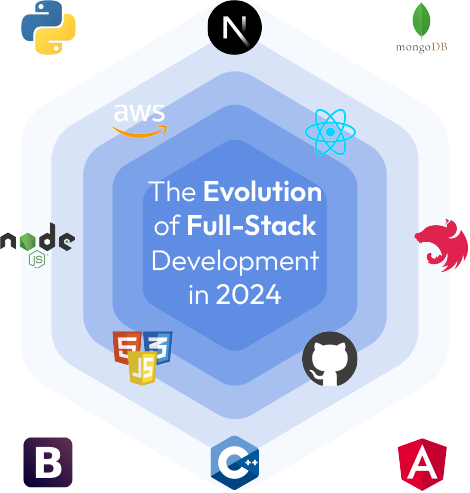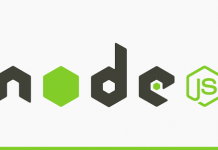Full stack development has undergone a remarkable journey, shaping the digital landscape as we know it today.
From its humble beginnings to its current state of prominence, and the exciting possibilities on the horizon, the evolution of full stack development is a testament to the ever-changing nature of technology.
Past: The Foundation
In the early days of the internet, web development was primarily divided into two roles: front-end and back-end development.
Front-end developers focused on creating the user interface and experience, while back-end developers worked on server-side logic, databases, and infrastructure.
Full stack development emerged as a response to the demand for professionals who could work on both ends of the spectrum.
During this period, full stack developers typically had expertise in technologies like HTML, CSS, JavaScript for the front end, and languages like PHP, Java, or Python for the back end.
They were responsible for building and maintaining entire web applications, from the client-facing interface to the server-side functionalities.
Present: The Era of Specialization and Integration
As technology advanced, so did the expectations for full stack developers. The modern full stack developer is no longer just proficient in a handful of languages and frameworks but is expected to have a broader skill set encompassing a variety of tools and technologies.
In today’s landscape, full stack developers often specialize in specific areas while still maintaining a broad understanding of the entire stack.
This specialization can include expertise in front-end frameworks like React or Angular, back-end frameworks like Node.js or Django, and proficiency in database management systems like MongoDB or MySQL.
Moreover, the rise of DevOps practices has blurred the lines between development and operations, requiring full stack developers to have knowledge of deployment processes, containerization, and cloud platforms like AWS, Azure, or Google Cloud.
Integration has also become a key focus in modern full stack development. With the proliferation of APIs and microservices architecture, full stack developers must be adept at integrating various services and components to build scalable and robust applications.
Future: The Rise of AI and Automation
Looking ahead, the future of full stack development promises to be even more dynamic and transformative. One of the most significant trends shaping the future of full stack development is the integration of artificial intelligence (AI) and machine learning (ML) technologies.
AI-powered tools and frameworks are already revolutionizing various aspects of software development, from automating mundane tasks like code generation and testing to enabling intelligent insights and predictions.
Full stack developers of the future will need to embrace AI and ML technologies to stay competitive and meet the growing demands for smarter, more efficient applications.
Additionally, the proliferation of low-code and no-code development platforms is expected to democratize app development, allowing individuals with non-technical backgrounds to create sophisticated applications with minimal coding knowledge.
While these platforms may reduce the barrier to entry for aspiring developers, they also pose new challenges and opportunities for full stack professionals.
Conclusion:
The evolution of full stack development reflects the rapid pace of technological advancement and the ever-changing demands of the digital world.
From its origins as a response to the need for versatile professionals to its current state of specialization and integration, full stack development continues to evolve in response to emerging technologies and trends.
As we look to the future, full stack developers must adapt to embrace AI, automation, and new development paradigms to remain at the forefront of innovation.
By staying agile and continuously learning, today’s full stack developers can shape the future of software development and drive innovation in the digital era.
Master Your Coding Skills with BootSelf AI
If you're looking to enhance your coding abilities and upskill in artificial intelligence, look no further than the BootSelf AI app. This innovative platform provides AI-based coding lessons that are tailored to your individual learning pace.
Available on both iOS and Android, you can download the BootSelf AI app and start mastering coding skills today:













